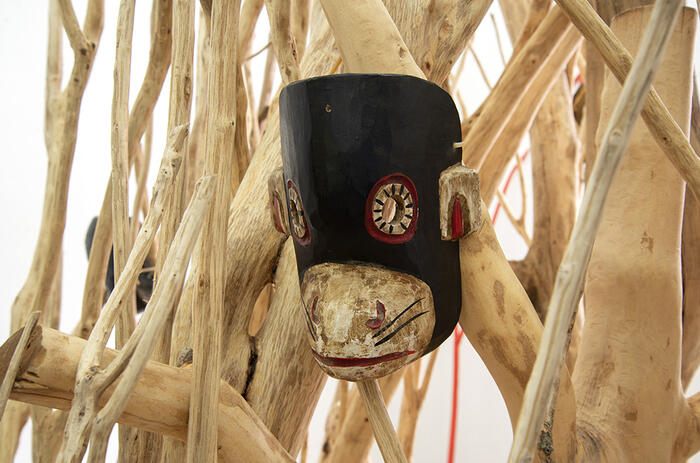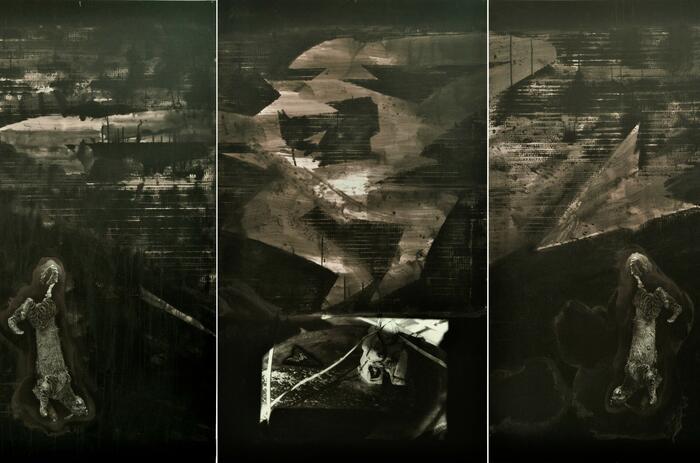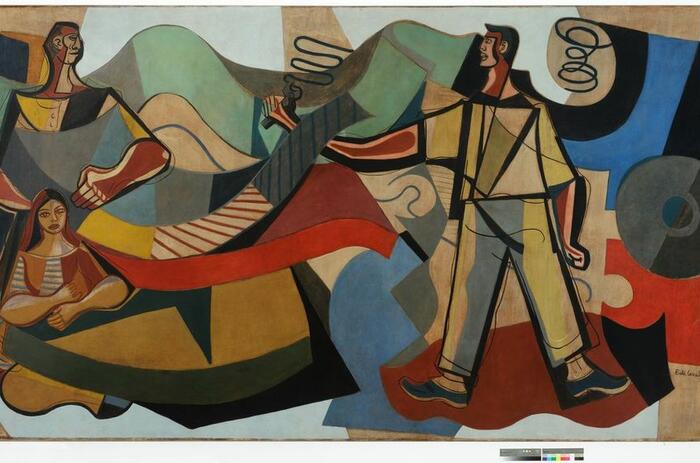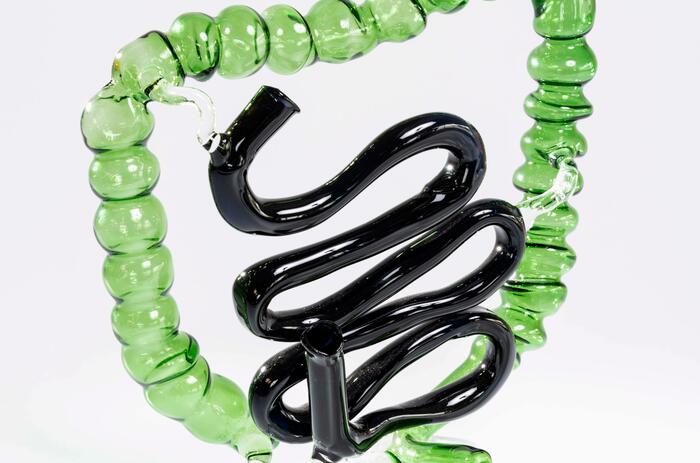ADRIANA VAREJÃO EXPLORES COLONIALISM THROUGH AESTHETIC SYNCRETISM AT GAGOSIAN NEW YORK
Varejão’s rich and diverse artistic oeuvre embodies the mythic pluralism of Brazilian identity and the fraught social, cultural, and aesthetic interactions that engendered it. Living and working in Rio de Janeiro, she draws upon the potent visual legacy of colonial histories and transnational exchange, creating confluent forms that expose the multivalent nature of memory and representation.
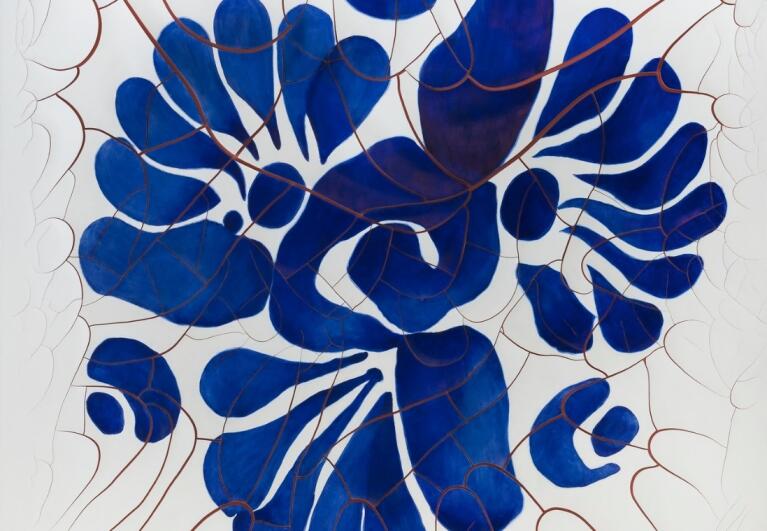
“My work is always in the territory of hybridity. My content forms in terms of decolonizing subjectivities because it deals with countless cultural references—not only from official history, but also from many other hidden or obscured histories that lie at the margins”, states the artist.
In the late 1980s, Varejão began researching azulejos, the glazed terra-cotta tiles of Arab origin that have been the most widely used form of decoration in Portuguese art since the Middle Ages and that were brought to Brazil through colonization and trade. From this, she developed her unique and ever-evolving series of “tile” paintings, made by covering a square canvas with a thick layer of plaster and allowing it to gradually dry to produce a surface with deep fissures resembling ancient crackled porcelain—or geological time itself.
-
Three Diamonds, 2019. Oil and plaster on canvas. 180 × 180 × 4.1 cm. Photo: Vicente Mello. © Adriana Varejão
-
Red Square, 2020. Oil and plaster on canvas. 180 × 180 × 4.1 cm. Photo: Vicente Mello. © Adriana Varejão
-
Golondrina (swallow), 2021. Oil and plaster on canvas. 180 × 180 × 4.1 cm. Photo: Vicente Mello. © Adriana Varejão
-
Brown Sphere, 2020. Oil and plaster on canvas. 180 × 180 × 4.1 cm. Photo: Vicente Mello. © Adriana Varejão
-
Green Disks, 2020. Oil and plaster on canvas. 180 × 180 × 4.1 cm. Photo: Vicente Mello. © Adriana Varejão
Varejão’s most recent tile paintings explore the culture of Talavera poblana, the Mexican ceramic tradition originating in Spain that, like the azulejo, draws on diverse sources—in this case, indigenous, Hispanic, Italian, and Chinese. A photograph of a wall of Talavera tiles taken by Varejão in Mexico in the mid 90-s formed the basis for the painting Parede Mexicana (1999); twenty years later, this painting has become the indexical reference for an entire new series where the key motifs of individual tiles are adapted and enlarged to seventy-inch square canvases.
In Varejão’s transformative process, these motifs shift into crisp geometries with a bold and decisive use of color, invoking the dynamic designs of Brazil’s leading modernists, from Oscar Niemeyer to Athos Bulcão, while suggesting affinities with twentieth-century innovators, such as Josef Albers and Ellsworth Kelly. Varejão revels in these unexpected artistic crossroads; by interweaving time, culture, and place, she initiates dialogue between aesthetic systems once segregated by dominant master narratives, and in so doing raises provocative questions about the lives of forms in art.
-
Installation views. Photo: Rob McKeever. Courtesy of Gagosian
-
Installation views. Photo: Rob McKeever. Courtesy of Gagosian
-
Installation views. Photo: Rob McKeever. Courtesy of Gagosian
-
Ruína Brasilis (Brasilis Ruin), 2021. Oil on canvas and polyurethane with aluminum support. 226.1 × 40 × 40 cm. Photo: Vicente Mello. © Adriana Varejão
The paintings surround three new Meat Ruins (2020–21), towering columns that simulate fragments of Talavera-tiled walls and architectural elements. While their exposed cross-sections speak to the radical “anarchitecture” of Gordon Matta-Clark, Varejão replaces the lathes and plaster of built structures with roiling masses of painted viscera to simulate the veined marble and corporeal drama of the Baroque. In their eroticism and theatricalized reinvention of space and place, the Meat Ruins embody the violence that has shaped Latin American history, while evoking the spirit of antropofagia that transfigured the social taboo of cannibalism into a process of cultural absorption in the modern period. In a pointed reference to her own country in its current state of political and ecological turmoil and degradation, Varejão has titled one of the sculptures Ruína Brasilis (Brasilian Ruin), painting its surface in tiles of national colors.
Adriana Varejão was born in Rio de Janeiro. She attended the Escola de Artes Visuais do Parque Lage from 1983 to 1985. In 1986 she began to experiment with the medium of oil painting, reimagining in thick impasto the ornate Baroque frescoes and religious relics of the eighteenth-century churches in Ouro Preto, Minas Gerais, Brazil.
In 1992, Varejão spent three months traveling in China, where she studied Song dynasty (960–1279 CE) ceramics and classical Chinese landscape painting. From that journey, she began to consider how Eurocentric narratives distort or even erase the histories of various artistic methods and motifs. In recent years, Varejão has developed a confluent interest in the culture of pre-Hispanic, colonial, and modern Mexico. In January 2017, she visited Puebla as a guest of the Museo Amparo to study local talavera and cholula polychrome pottery. Her subsequent engagement with talavera, whose heterogeneous cultural sources parallel those of the Brazilian Baroque impulse that has guided her artistic inspiration thus far, has catalyzed a new direction in her paintings in which the clean shapes and bright hues of hard-edge abstraction are brought into dialogue with pre-Hispanic artisanal forbears. Through this conscious interweaving of time, culture, and place, Varejão draws attention to the parallels between aesthetic systems previously separated by dominant master narratives and raises vital questions about the life of forms in art.

